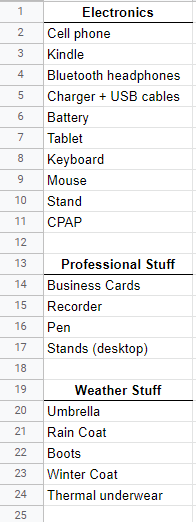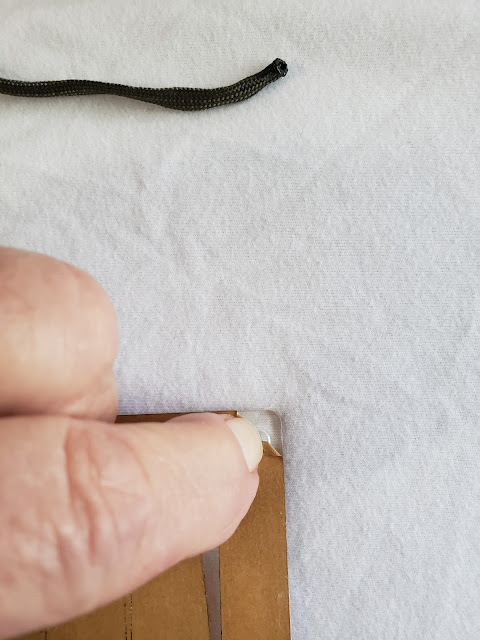Even though it is "California cold", raining, and I'm not riding very often, now is a good time to go through my various first aid kits to come up with a decent amount of gear to carry on my motorcycle.
In a previous post I showed what I started with, but since then I've added some extra items that I believe are useful.
What's In the Bags?
Several things I really like, have used in the past, and a bit extra.
Left
Maxpedition zipper bag, containing the following:
- Hyfin Vent compact chest seal
- Celox Rapid Z-fold gauze pack
- H&H Medical mini compression bandage
- North American Rescue C-A-T tourniquet
- Adventure Medical Quick Clot sponge (discontinued).
Middle
Adventure Medical Trauma Pack, containing the following:
- 1 x Bandage, Conforming Gauze, 3"
- 1 x Dressing, Gauze, Sterile, 2" x 2", Pkg./2
- 1 x Dressing, Gauze, Sterile, 4" x 4", Pkg./2
- 1 x Gloves, Nitrile (Pair), Hand Wipe
- 1 x QuikClot Gauze 3" x 2'
- 1 x Trauma Pad, 5" x 9"
- 1 x Duct Tape, 2" x 26"
- 1 x Bandage, Triangular
- 4 x Antiseptic Wipe
- 1 x Trauma and Accident Management Instructions
Right
North American Rescue Mini First Aid Kit (NAR M-FAK), recently purchased directly from North American Rescue specifically to have a red, easily-seen kit, since there isn't red as an order option on Amazon. It contains the following:
- 1 x CAT Gen 7 Tourniquet Orange
- 1 x 4 in. Flat ETD, 1 x S-rolled Gauze (4.5 in. x 4.1 yd)
- 1 x HyFin Vent Compact Chest Seal, Twin Pack
- 1 x pair Bear Claw Nitrile Trauma Gloves, lg
 |
| https://www.narescue.com/m-fak-mini-first-aid-kit-red.html |
Why Two Tourniquets?
I have talked with several different riders and racers who all suggested adding another tourniquet, as well as extra bandages and quick clotting agents, since crashing on a motorcycle usually involves hitting the pavement or ground at speed. This means road rash at the minimum, and potentially serious cuts and bleeding. From my own experiences with motorcycle crashes and damage seen on my friends, even this amount of blood-stopping material may not be enough.
With this in mind I've asked several different EMT's and Paramedics if I should be concerned with the 'Use By' dates on some of my supplies. I was told that yes, there could be some deterioration of the clotting agents, especially if stored at high heat, more than one or two years past the listed date.
Recap and Takeaway
- Unknown model Maxpedition bag I've had for years.
- Hyfin Vent chest seal from Amazon: $16.19 with Prime.
- One Celox Rapid Z-fold gauze pack from Amazon: $44.74 with Prime.
- One H&H Medical Mini Compression bandage from Amazon: $9.99 with Prime*
- One North American Rescue C-A-T tourniquet from Amazon: $32.95 with Prime.
- One Adventure Medical Quick Clot sponge (discontinued).
- One Adventure Medical Trauma Pack from Amazon: $25.99 with Prime.
- One North American Rescue M-FAK: $108.69, purchased directly from manufacturer.
* * *
Just a reminder: if you plan on buying anything through Amazon, please consider using our referral link. When you do, a portion of the sale comes back here to help keep this site running!
If you have comments, suggestions or corrections, please post them so we all can learn. And remember, Some Is Always Better Than None!
NOTE: All items tested were purchased by me. No products have been loaned in exchange for a favorable review. Any items sent to me for T&E will be listed as such. Suck it Feds.
If you have comments, suggestions or corrections, please post them so we all can learn. And remember, Some Is Always Better Than None!
NOTE: All items tested were purchased by me. No products have been loaned in exchange for a favorable review. Any items sent to me for T&E will be listed as such. Suck it Feds.



























